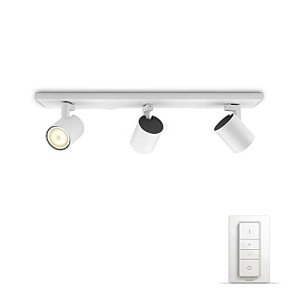Decorative Lighting in the UK: A Comprehensive Guide
Over the last few years, decorative lighting has taken centre phase in interior design throughout the UK. Homeowners and designers alike are progressively acknowledging the significance of lighting not simply for performance, however also for aesthetic appeals. This post explores the various types of decorative lighting available, the most recent trends in the UK market, and practical ideas for selecting and setting up the right lighting to enhance various areas in homes.
Understanding Decorative Lighting
Decorative lighting includes a broad range of lighting fixtures that serve to improve the charm of a space while also providing lighting. This type of lighting adds a touch of style, character, and warmth to environments, producing state of minds and highlighting architectural features. The essential difference in between decorative lighting and other kinds of lighting, such as task or ambient lighting, is that decorative lighting primarily intends to create visual appeal.
Types of Decorative Lighting
There are numerous types of decorative lighting that house owners can pick from, consisting of:
- Chandeliers: Often the centerpiece of dining areas or grand entryways, chandeliers are detailed lighting fixtures with multiple bulbs and creative designs.
- Pendant Lights: Suspended from the ceiling, pendant lights are offered in various designs, making them appropriate for cooking areas, dining areas, or living spaces.
- Wall Sconces: Mounted on walls, these fixtures can provide ambient lighting or spotlight specific areas, such as artwork or architectural information.
- Table Lamps: Used on bedside tables, desks, or side tables, they can vary from minimalist styles to elaborate artistic pieces.
- Floor Lamps: These flexible fixtures can fill empty corners while offering both ambient and task lighting.
- Fairy Lights: String lights or fairy lights add a whimsical touch to both indoor and outdoor areas, perfect for producing a welcoming environment.
- Neon Signs: An emerging pattern, neon signs add a modern, metropolitan style and are popular for home bars, games spaces, and personal areas.
Present Trends in Decorative Lighting
The UK lighting market has actually experienced numerous progressing patterns that show consumer choices and advancements in innovation. A few of the popular patterns consist of:
- Sustainable Lighting: Eco-friendly options, such as LED lighting, are significantly favoured for their energy efficiency and lower carbon footprint.
- Smart Lighting: Integration of smart innovations allows house owners to manage their lighting through smart devices or voice assistants, offering benefit and versatility.
- Vintage and Industrial Designs: The rustic appeal of vintage and industrial styles stays in style, as they can easily blend with both modern and traditional interiors.
- Geometric Shapes: Light fixtures featuring bold geometric shapes add to a contemporary aesthetic that interest modern property owners.
Choosing the Right Decorative Lighting
When choosing decorative lighting, it is essential to consider the following factors:
- Purpose: Determine the main function of the lighting. Is it to develop a welcoming environment, highlight art work, or offer practical lighting for activities?
- Design: Carry out research study to ensure that the chosen lighting matches the existing decoration and shows individual design choices.
- Size: Consider the scale of the space. Extra-large fixtures can overwhelm little spaces, while small alternatives might appear lost in bigger areas.
- Positioning: Think critically about where the fixtures will be set up, guaranteeing they are available and effectively light up the desired areas.
- Energy Efficiency: Opt for energy-efficient LEDs whenever possible to minimize energy bills and contribute to sustainability.
Setting Up Decorative Lighting
When decorative lighting choices have been selected, correct installation is essential to accomplishing the desired result. Here are some standards to follow:
- Mounting Height: Ensure that chandeliers and pendant lights hang at a proper height. They must offer sufficient light without obstructing views or movement.
- Layered Lighting: Incorporate different layers, including job, ambient, and decorative lighting, to create balance and depth within an area.
- Dimmers: Installing dimmer switches can offer flexibility in adjusting light intensity based on activities and state of mind.
- Expert Assistance: For intricate setups, it might be advantageous to employ an expert electrical contractor to make sure safety and compliance with regional guidelines.
Decorative lighting uses a wonderful opportunity for house owners in the UK to reveal their style while boosting the functionality of their spaces. With a range of options readily available, mindful consideration of factors such as style, size, and placement can lead to spectacular outcomes. As Cheap Lighting UK continue to progress, individuals can stay on the cutting edge of decorative lighting design.
Frequently Asked Questions (FAQs)
Q: What is the difference in between decorative lighting and ambient lighting?A: Decorative lighting is primarily concentrated on aesthetic appeal, while ambient lighting supplies general illumination for a space. Q: How can I select the right size chandelier for my dining room?A: A common general rule is to add the measurements of the room(
in feet)and utilize that number as the size of the chandelier(in inches ). Q: Are LED lights appropriate for decorative lighting?A: Yes, LED lights are extensively utilized
due to their energy performance, long life-span, and ability to come in different styles. Q: Is it necessary to speak with an expert for installation?A: While some installations can be done DIY, it's recommended to
speak with a professional for complex setups to make sure security and
compliance. Q: What materials are popular for decorative lighting fixtures in the UK?A: Common materials consist of glass, metal, material, and wood, each contributing to different designs and aesthetics. By understanding the various kinds of decorative lighting available, staying notified about the most current patterns, and following important standards for selection and installation, anybody can change their home into stunning sanctuaries of light.

